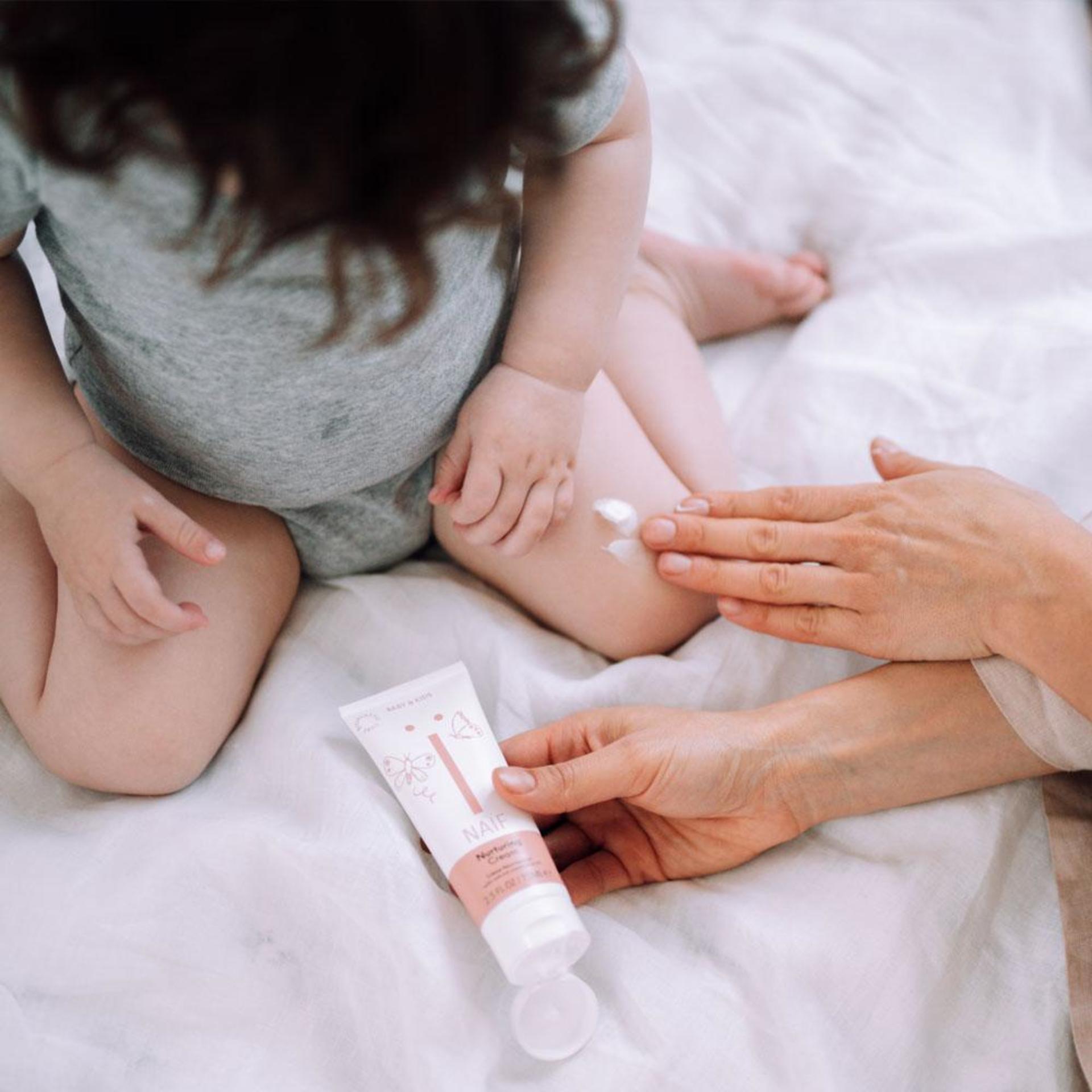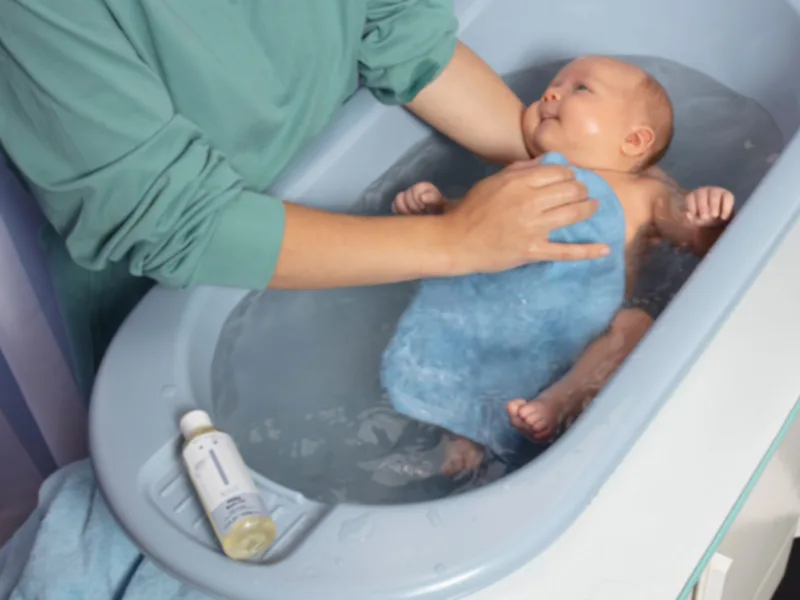Baby
7 skin conditions with tips what to do about them (if possible)
24 March 2023

Babies have a sensitive skin, because their skin still needs to develop after birth, it’s not completely finished yet! Eczema, baby acne and different childhood illnesses can cause red spots or rash. How to recognize different skin conditions you can read here. Apart from eczema, heat rash and chickenpox there are a lot of other things your little one might have to deal with. We’ve made another list, with tips of course!
1. Diaper rash
Alright, we admit, it’s another rash. But diaper rash is so common, we can’t skip this one. You can recognize diaper rash by the open and moist wounds that occur in the diaper area. Although diaper rash is really annoying and can be pretty painful, there is a great solution for it: zinc cream. Zinc oxide is known for its protective, cooling and soothing qualities. And our zinc cream also contains chamomile and vitamin E as soothing ingredients. Without added perfume, so it’s really suitable for damaged skin.
What to do with diaper rash?
You can prevent diaper rash by changing the diaper after every poo and peen. Make sure the skin is well dried before putting on a new one. Letting it air dry for a little bit can really make a change. And zinc cream, as we’ve said! You can do this preventatively too!
We also asked dermatologist Elodie Mendels about her best tips and tricks with diaper rash.
2. Cradle cap
Another very common issue with baby’s is cradle cap. It’s a type of eczema that usually occurs between weeks six and eight. After the baby turns one it’s usually gone, and after six, kids don’t really struggle with it anymore. Cradle cap is characterised by yellow/white flakes and crusts on the scalp. You don’t have to worry about it, lots of babies and kids have it. It might look a bit odd but it’s not dangerous or contagious.
What’s the reason for cradle cap?
The exact reason for cradle cap is not clear. What we do know is that the yeast strain pityrosporon ovale plays a role. This yeast strain loves a greasy environment and because there is sebum on your scalp (and eyebrows!) these spots are great areas for it to flourish.
What to do with cradle cap?
Is your baby really little, just leave it be. We know, it’s super tempting to scratch it off. With an older baby, who’s fontanel is closed, and with kids, you can remove cradle cap. Just put a bit of baby oil on their head, massage it into the skin and gently comb away the flakes.
3. Stork Bite
No your baby isn’t actually bitten by a stork ;). Stork Bite is the name of red spots (a type of birthmark) on the skin, often in the face or the neck. It’s not dangerous and usually disappears on its own. They are also known as angel kisses when the spots are on the forehead (often between the eyes) or on the eyelids. How cute is that?
Where do they come from?
The red spots get formed by groups of dilated blood vessels in the skin. After a while they get smaller and become less visible.
What to do with Stork Bite
It can take up to a year before Stork Bite spots disappear. In the neck it’s possible that they are visible for even longer, but it will be covered by hair. You can’t do anything about it, just wait and see until it disappears on its own.
4. Strawberry mark
Also called a haemangioma, a strawberry mark is (just like a Stork Bite) a group of dilated blood vessels accumulated. It’s not dangerous at all, but it is considered a benign tumour and can stand out quite a bit. Is it getting bigger or does it nog look right to you, you should always contact your doctor.
What to do with a strawberry mark
Nothing. Usually they get less obvious after 6 months and often it’s completely gone before you kiddo turns ten. It’s not always the case though, sometimes it can stay a little visible forever. You don’t have to use cream or anything, it’s useless. Just leave it be and keep an eye on it.
5. Pigmentation spot
A pigmentation spot is a dark (or light!) spot on the skin which usually goes away again. It’s a kind of birthmark (like the strawberry mark and stork bite). They can appear on the face, but also the rest of the body. These spots have more or less pigmentation, causing a different colour than the rest of the skin. It’s good to keep an eye on it in case it gets bigger.
What to do with a pigmentation spot?
Again: nothing. Just keep a close eye on it to see any changes or until it disappears by itself. Sometimes it does, sometimes it doesn’t. If you really feel the need to do something about it you can contact a dermatologist or your doctor.
6. Wine stain
Another birthmark. A wine stain is usually red or purple coloured. It’s a born vascular abnormality. They usually occur in the neck or on the face. The sport will grow with your baby and often changes colour from pink to darker. The sizes differ.
What to do with a wine stain?
It doesn’t disappear on its own but can be lessened with laser treatment. Wait until your kids are done growing before taking such steps. And also remember, any kind of birthmark makes your little one unique!
7. Mongolian blue spot
A mongolian blue spot can occur in baby’s and kids with a darker skin color. It’s a blue/black spot which is caused by pigmentation cells in the skin's fat layer. You usually find them on the lower back or bum and they are a few centimetres in size.
What to do with mongolian blue spot?
You don’t have to treat a mongolian blue spot, they usually disappear when kids are around four years of age.



